Introduction to Playing Chords on the English Concertina
This book provides a path to learning to play chords on the English concertina based on the materials I put together to teach myself. It offers detailed instructions for developing the physical skills to play with both hands simultaneously, learning fingering patterns for different kinds of chords, and learning enough about how chords work to start creating your own arrangements. Instruction covers both 48-key treble and 56-key tenor-treble instruments.
Although musical scores appear throughout, you don’t need to read music to follow the lessons. Many exercises provide keyboard diagrams. Most scores identify the chords using a shorthand notation and include a tablature that identifies the buttons used. For those who learn best by ear, the scores can all be played from here.
Whether you’re just starting to learn to play chords or wanting to expand your skills, this book will help you explore a world of music that isn’t accessible when you play tunes one note at a time.

Approach to Learning
The best way to learn to play using both hands at the same time is to practice the fingering patterns you will use to play chords with tunes.
Exercises begin by showing you how to play sequences of 2-note dyad chords with notes on both hands. They then go on to teach more complex patterns and show how to use them in arrangements.
To help you learn to create your own arrangements, the book includes several sections on how chords are constructed, how they relate to one another, and how they fit with the melodies they accompany. .
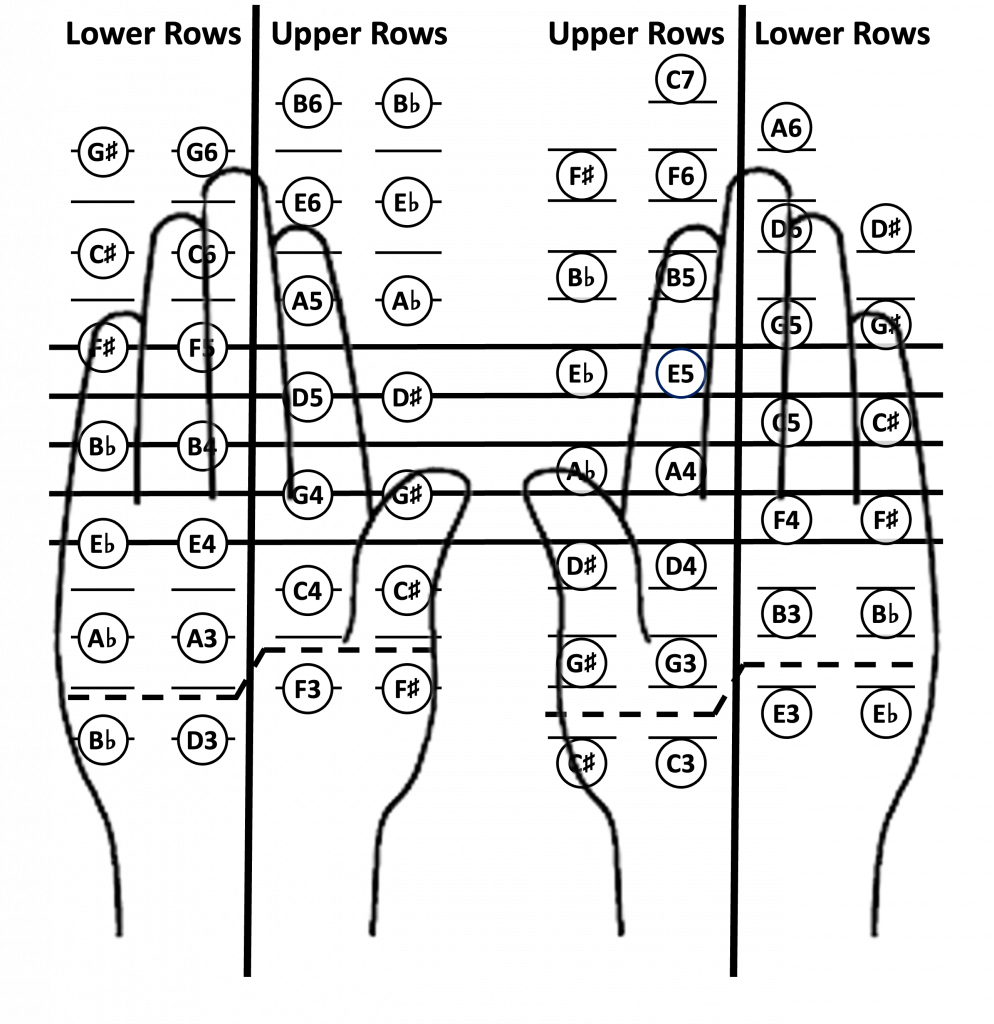
The book shows how different kinds of scales, called modes, are used in traditional music, and provides arrangements for several tunes in each of 4 commonly used modes: Ionian, Mixolydian, Dorian, and Aeolian

Learn Core Fingering Patterns
Ordinary root position chords use a root note plus the notes a 3rd and a 5th above the root. Those buttons make triangles on one side of the instrument or the other. See Left and Right.
Inverted chords move one or both of the 3rd or 5th down an octave. The English concertina keyboard changes the relative locations of inverted intervals based on whether the root button is on an upper or lower row of the left or right hand. The patterns can be challenging to navigate at first, but working through the book’s exercises will make them second nature.
Root Note on Left
- Inverted 5th is on the same row on the right
- Inverted 3rd is on the opposite row on the right
Root Note on Right
- Inverted 5th is on the opposite row on the left
- Inverted 3rd is on the same row on the left
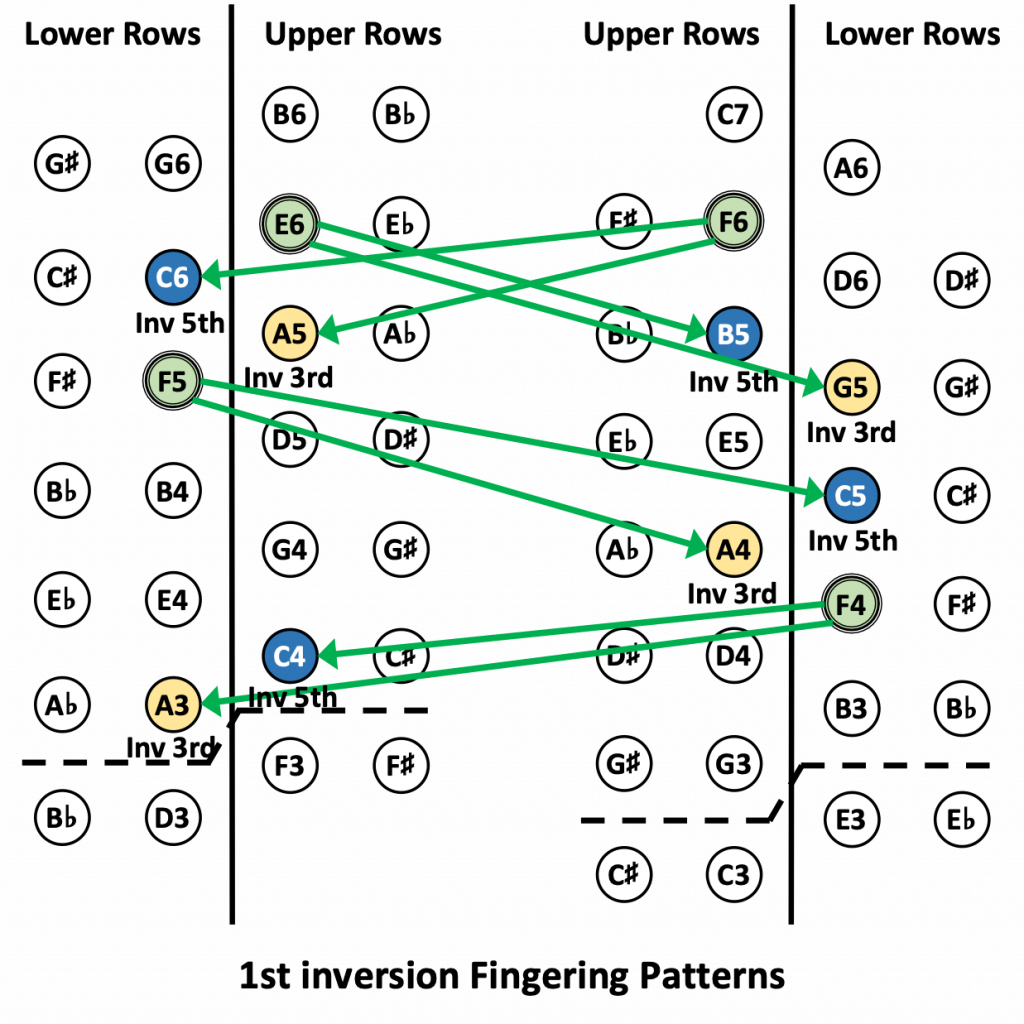
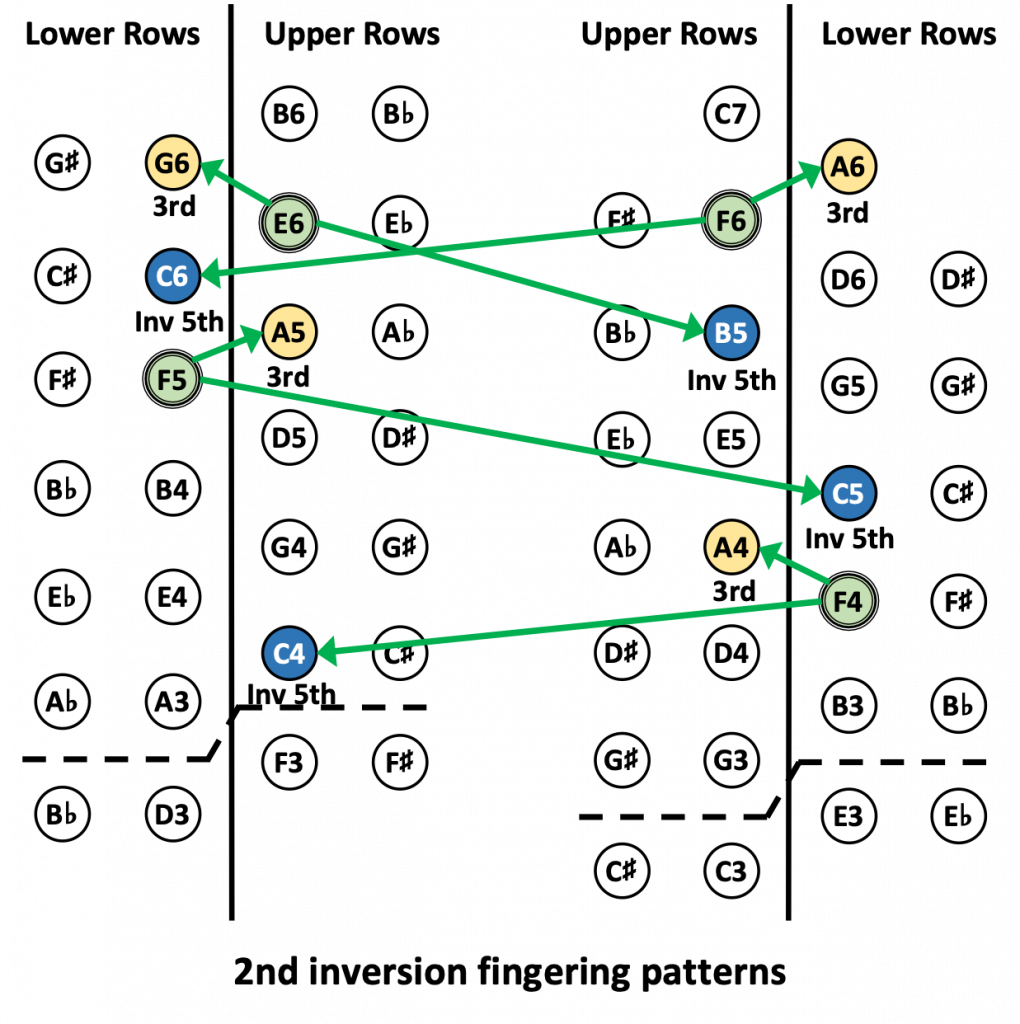
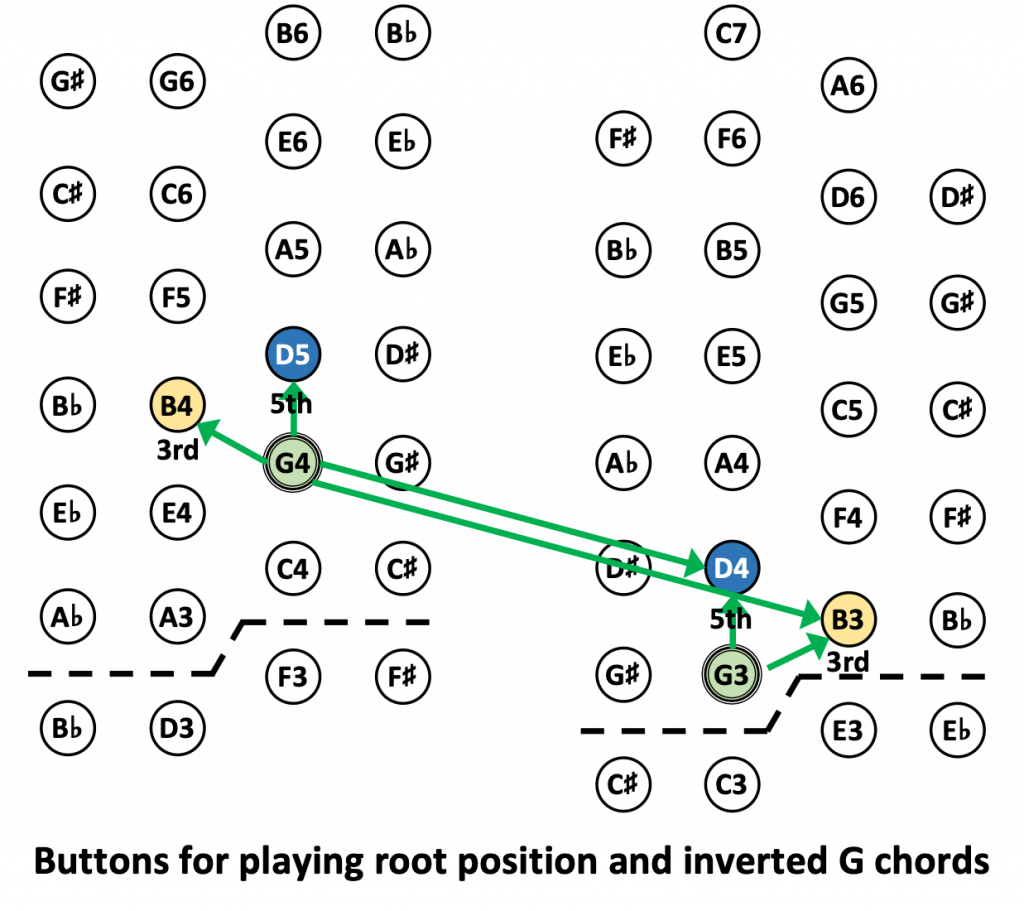

Chord Shorthand and English Concertina Tablature
Chords are identified using a shorthand I created to make it easy to write out arrangements on chord sheets.
Tablature shows you see which buttons to push without having to rely on musical scores.
This example shows shorthand, tablature, a musical score, and a keyboard diagram for a 1st inversion F#m chord using button F#4 as the root.
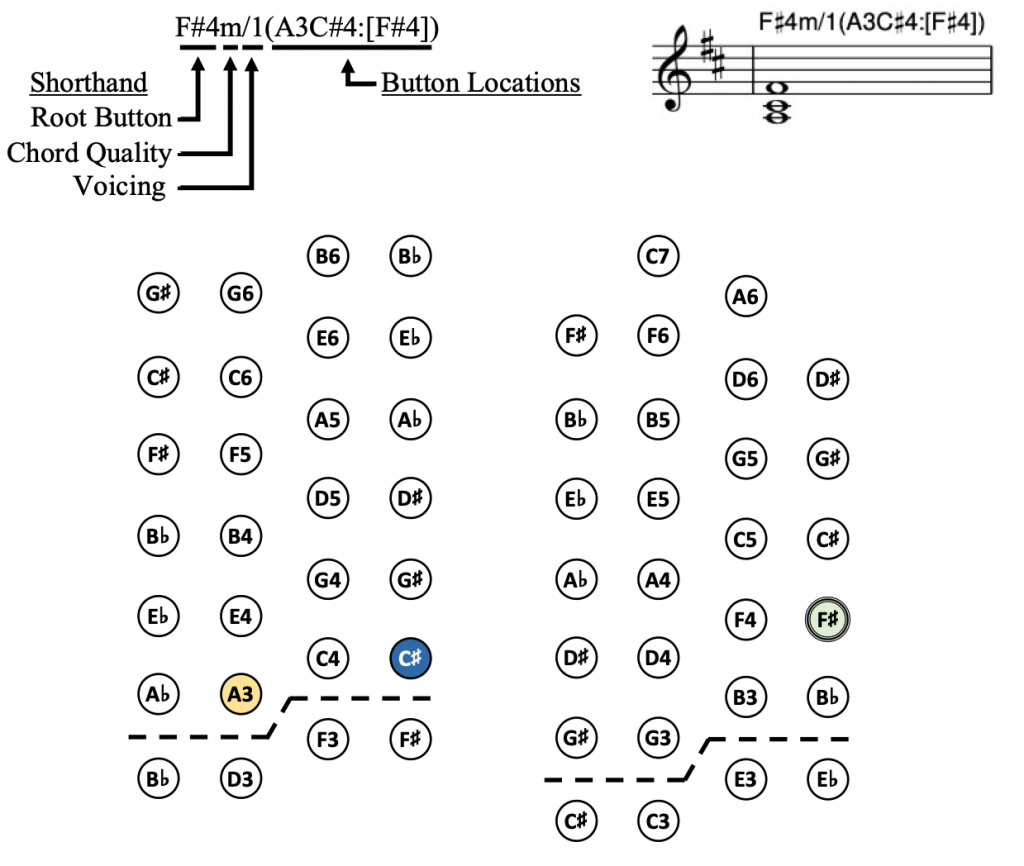
All the scores in the book were written using this shorthand in ABC Notation with the EasyABC editor. I wrote software to transform the shorthand into the fleshed out scores that appear in the book.
For example, the shorthand for this chord was written in ABC as: ”F#4m/1″[F8]
The transformer expanded the shorthand into: “F#4m/1(A3C#4:[F#4])”[F8A,8C8]

Playable Music Scores
I used the EasyABC editor to export playable HTML files from the fleshed out scores. I wrote additional software to add tables of contents and other structure to the web pages.
This is an example of a playable accompaniment with shorthand and tablature for the A part of Da Slockit Light. Click the score to start or stop playing at a particular location. All the scores in the book can be played this way.

